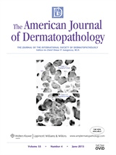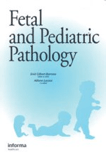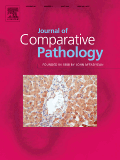
NEUROPATHOLOGY
Scope & Guideline
Bridging Pathology and Neurology for Better Outcomes
Introduction
Aims and Scopes
- Neuropathological Diagnosis and Case Reports:
The journal emphasizes the importance of detailed autopsy and biopsy findings in diagnosing various neurological diseases, including neurodegenerative disorders, brain tumors, and infectious diseases. - Molecular and Genetic Insights:
Research articles often explore the genetic and molecular underpinnings of neuropathological conditions, including mutations associated with specific disorders, aiding in the understanding of disease mechanisms and potential therapies. - Clinical Correlation and Prognostic Factors:
Many papers assess the relationship between neuropathological findings and clinical outcomes, providing insights into prognostic indicators and the effectiveness of therapeutic interventions. - Innovative Diagnostic Techniques:
The journal highlights advancements in diagnostic methodologies, including immunohistochemistry, molecular profiling, and the use of artificial intelligence in neuropathological diagnostics. - Emerging Pathological Entities:
There is a focus on reporting and characterizing novel or rare neuropathological entities, contributing to the broader understanding of less common diseases and their clinical implications.
Trending and Emerging
- Neuroinflammation and Immune Response:
There is an increasing focus on the role of neuroinflammation and immune responses in various neuropathological conditions, including autoimmune encephalitis and neurodegenerative diseases, underscoring the importance of the immune system in brain pathology. - Precision Medicine and Genetic Profiling:
Research focusing on precision medicine approaches, including somatic mutational profiling and the impact of genetic alterations on treatment responses, is on the rise, reflecting a broader trend towards personalized healthcare in neurology. - Neurodegeneration and Proteinopathies:
Emerging themes include the study of proteinopathies beyond traditional categories, such as TDP-43 and α-synuclein pathologies, indicating a growing interest in the overlapping mechanisms of neurodegenerative diseases. - Artificial Intelligence in Neuropathology:
The application of artificial intelligence and machine learning techniques in neuropathological diagnostics is becoming more prevalent, highlighting the integration of technology in enhancing diagnostic accuracy and research efficiency. - Molecular Pathology of Rare Tumors:
There is a notable increase in the characterization of rare brain tumors and their molecular profiles, reflecting a trend towards understanding the diverse pathology of less common CNS tumors.
Declining or Waning
- Traditional Histopathology Techniques:
There has been a noticeable reduction in papers solely relying on traditional histopathological techniques without molecular or genetic analysis, as the field increasingly emphasizes integrated approaches combining histopathology with molecular data. - Case Reports of Common Neurological Disorders:
The frequency of case reports concerning common neurological disorders, such as typical Alzheimer's disease or standard glioblastoma presentations, has decreased, possibly due to saturation in the literature and a shift towards more complex or rare cases. - Basic Research on Established Pathologies:
Research focused on well-established neuropathological conditions, like classic multiple sclerosis or Parkinson's disease, has seen a decline, likely as researchers pivot towards understanding novel entities or the molecular basis of these diseases.
Similar Journals

Dermatopathology
Exploring the microscopic world of skin health.Dermatopathology is a pioneering open-access journal dedicated to the field of skin pathology, published by MDPI in Basel, Switzerland. Since its inception in 2014, the journal has provided a vital platform for the dissemination of cutting-edge research, advancements, and clinical studies that aid in the understanding of dermatological diseases at the microscopic level. With its commitment to accessibility and wide-ranging contributions from international researchers, Dermatopathology serves as an essential resource for dermatologists, pathologists, and academics alike. The journal strives to foster innovative collaborations and enhance knowledge within the multidisciplinary sphere of dermatology and pathology, ensuring timely access to valuable information that can influence clinical practices and improve patient outcomes. Researchers are encouraged to submit their original articles, case reports, and reviews, contributing to the growing body of knowledge essential for advancing the field.

ACTA NEUROLOGICA BELGICA
Elevating Clinical Practice Through Rigorous Research.ACTA NEUROLOGICA BELGICA is a leading academic journal published by Springer Heidelberg, dedicated to advancing the field of neurology and medicine. With an ISSN of 0300-9009 and E-ISSN 2240-2993, this journal has been a vital resource since its inception, contributing significantly to neurological research and clinical practice. It holds a respectable impact factor with categories spanning from Q2 in Medicine (miscellaneous) to Q3 in Neurology (clinical) as of 2023, indicating its prominence in the scientific community. The journal's extensive coverage since 1959 enhances its historical relevance, while its ongoing publication until 2024 ensures the latest developments are readily accessible. Researchers and practitioners can benefit from its rigorous peer-reviewed articles, which are crucial for staying current in this rapidly evolving discipline. As a scholarly platform, ACTA NEUROLOGICA BELGICA plays a pivotal role in disseminating knowledge and fostering innovation in neurology, making it a must-read for professionals, students, and anyone involved in the field.

AMERICAN JOURNAL OF DERMATOPATHOLOGY
Connecting Academia and Clinical Practice in DermatopathologyAMERICAN JOURNAL OF DERMATOPATHOLOGY, published by Lippincott Williams & Wilkins, is an essential resource for professionals and researchers engaged in the fields of dermatology, pathology, and forensic medicine. Established in 1979, the journal aims to disseminate cutting-edge research and advancements pertaining to the microscopic examination of skin disorders. With an esteemed impact factor that positions it well within the Q3 category of dermatology and pathology as of 2023, the journal ranks #81 out of 142 in dermatology and #130 out of 208 in pathology according to Scopus. Although it does not currently offer open access options, the journal provides valuable insights and substantial contributions to the understanding of dermatopathology, making it a vital tool for academics, clinicians, and students seeking to stay abreast of the latest findings and practices in the field. Its commitment to high-quality research continues to foster a deeper understanding of skin diseases, enhancing patient care and scientific inquiry alike.

Fetal and Pediatric Pathology
Illuminating the path to improved child health.Fetal and Pediatric Pathology, an esteemed journal published by TAYLOR & FRANCIS INC, is dedicated to advancing the field of pediatric and fetal medicine through the dissemination of high-quality research and clinical insights. With an ISSN of 1551-3815 and an E-ISSN of 1551-3823, the journal has been a key resource for researchers and practitioners since its inception in 1983. Based in the United Kingdom, it covers a broad spectrum of topics relevant to Medicine, Pathology and Forensic Medicine, and Pediatrics, Perinatology, and Child Health, consistently reflecting on contemporary challenges faced in these fields. The journal has attained a commendable Q3 ranking within its categories as of 2023, underlining its relevance in the academic community. Though not an open-access publication, the research presented in Fetal and Pediatric Pathology plays a pivotal role in informing practice, guiding future studies, and enhancing the understanding of diseases affecting fetuses and children. Its convergence of research throughout multiple years, continuing until 2024, marks it as a crucial platform for ongoing scientific dialogue and innovation, aimed at fostering better health outcomes for younger populations.

Acta Neuropathologica Communications
Exploring the Depths of Neuroscience Research.Acta Neuropathologica Communications is a distinguished open-access journal published by BMC since 2013, focusing on the rapidly advancing fields of neurology, cellular and molecular neuroscience, and pathology. Located in the United Kingdom, this journal serves as a vital platform for researchers to disseminate significant findings that enhance our understanding of neurological disorders and their underlying mechanisms. With an impressive impact factor reflected in its Q1 ranking across multiple relevant categories, including Cellular and Molecular Neuroscience, Neurology (Clinical), and Pathology and Forensic Medicine, Acta Neuropathologica Communications stands out in the academic community for its rigorous peer-review process and commitment to high-quality research. The journal’s Scopus rankings highlight its global relevance, placing it in the top percentiles among leading research publications. Researchers, professionals, and students alike are encouraged to access and contribute to this essential resource, fostering a collaborative and informed approach to tackling the complexities of neuropathology and neuroscience.

METABOLIC BRAIN DISEASE
Pioneering research in metabolic brain disorders.METABOLIC BRAIN DISEASE, published by SPRINGER/PLENUM PUBLISHERS, is a leading journal dedicated to advancing our understanding of the metabolic processes impacting brain health and disease. Established in 1986 and set to continue until 2024, this journal encompasses a wide range of interdisciplinary research that intersects the fields of Biochemistry, Cellular and Molecular Neuroscience, and Neurology, as evidenced by its notable quartile placements in Q2 and Q3 for 2023. With an ISSN of 0885-7490 and an E-ISSN of 1573-7365, it serves as a vital resource for researchers and practitioners aiming to deepen their insights into cerebral metabolic disorders and their implications. Although currently not an Open Access option, its rigorous peer-review process ensures that high-quality, impactful research reaches its audience. Showcasing a significant rank within the top percentile of its categories, METABOLIC BRAIN DISEASE is instrumental in shaping the future of neurological research and clinical applications.

JOURNAL OF COMPARATIVE PATHOLOGY
Exploring Pathological Insights Across SpeciesJOURNAL OF COMPARATIVE PATHOLOGY, published by Elsevier Science Ltd, stands as a significant publication within the fields of pathology and forensic medicine, as well as veterinary studies. With an ISSN of 0021-9975 and an E-ISSN of 1532-3129, this journal has been disseminating critical research since 1950, contributing to the advancement of knowledge through its focus on comparative pathology. The journal's reputable standing is underscored by its Q3 classification in Pathology and Forensic Medicine and Q2 in Veterinary (miscellaneous) for 2023, reflecting its vital role in shaping contemporary discourse in these domains. The Scopus ranks further solidify its presence, placing it at the 51st percentile in general veterinary sciences and the 32nd percentile in pathology—a testament to the quality and relevance of the contributions it publishes. Although it operates under a subscription model, the journal remains accessible to researchers and practitioners who aim to deepen their understanding of pathological phenomena across species, enhance diagnostic accuracy, and improve clinical practices. With a steadfast commitment to rigorous peer review and a global readership, the JOURNAL OF COMPARATIVE PATHOLOGY is an essential resource for those engaged in research and professional practice, fostering collaborations and innovations that bridge complementary areas of study.

Indian Journal of Pathology and Microbiology
Illuminating the Frontiers of Pathological ResearchIndian Journal of Pathology and Microbiology, published by Wolters Kluwer Medknow Publications, is a distinguished open-access journal that has been fostering knowledge dissemination in the fields of pathology and microbiology since 2008. With an ISSN of 0377-4929 and E-ISSN 0974-5130, this journal serves as a critical resource for researchers and practitioners committed to advancing their understanding of medical sciences in India and beyond. Spanning decades of valuable research contributions since its establishment in 1972, it provides a platform for peer-reviewed articles that explore current trends and innovations in medicinal pathology and microbiological studies. Although it holds a Q4 ranking in categories such as medicine and microbiology, it maintains a notable Q3 classification in pathology and forensic medicine, highlighting its relevance to contemporary scientific discussions. Accessible freely to a global audience, the journal plays a pivotal role in enhancing scholarly communication and collaboration, making it an indispensable tool for students, professionals, and researchers alike aiming to contribute to this evolving discipline.

PATHOLOGY INTERNATIONAL
Innovating Insights for a Healthier TomorrowPATHOLOGY INTERNATIONAL, published by WILEY, stands as a distinguished journal in the field of pathology and forensic medicine, serving as an essential resource for researchers, clinicians, and students alike. With its ISSN 1320-5463 and E-ISSN 1440-1827, PATHOLOGY INTERNATIONAL has established itself since its inception in 1951, navigating through an evolving landscape in medical science with insights and breakthroughs up to 2024. It holds a commendable Q2 ranking in both the Medicine (miscellaneous) and Pathology and Forensic Medicine categories, indicating its robust influence and quality within these fields, as evidenced by its placement in the 70th percentile of Scopus rankings. While currently not an open-access journal, it provides access options that ensure valuable research remains available to the academic community. PATHOLOGY INTERNATIONAL commits to advancing the discipline through pioneering research articles, comprehensive reviews, and expert opinions that push the boundaries of understanding in pathology, thereby supporting the enhancement of diagnostic and therapeutic practices.

Journal of Korean Neurosurgical Society
Elevating Neuroscience: Knowledge for a Brighter FutureThe Journal of Korean Neurosurgical Society, with its ISSN 2005-3711 and E-ISSN 1598-7876, stands as a paramount resource in the field of neurosurgery, bridging clinical practice and cutting-edge research in both neurology and multidisciplinary neuroscience. Published by the Korean Neurosurgical Society, this open-access journal has been committed to disseminating invaluable knowledge to the global scientific community since its establishment in 1972. Located in Seoul, South Korea, the journal underscores its prominence with impressive quartile rankings—Q3 in Neurology (Clinical), Q3 in Neuroscience (Miscellaneous), and Q2 in Surgery for 2023. Its standing in Scopus rankings further emphasizes its impact, with a ranking of #195/551 in Medicine: Surgery and #235/400 in Medicine: Neurology (Clinical). By fostering a platform for innovative findings and advancements in surgical techniques, the Journal of Korean Neurosurgical Society aims to support professionals, researchers, and students alike in their pursuit of excellence and knowledge in neurosurgery and related fields, ensuring a brighter future for patient care and scientific inquiry.